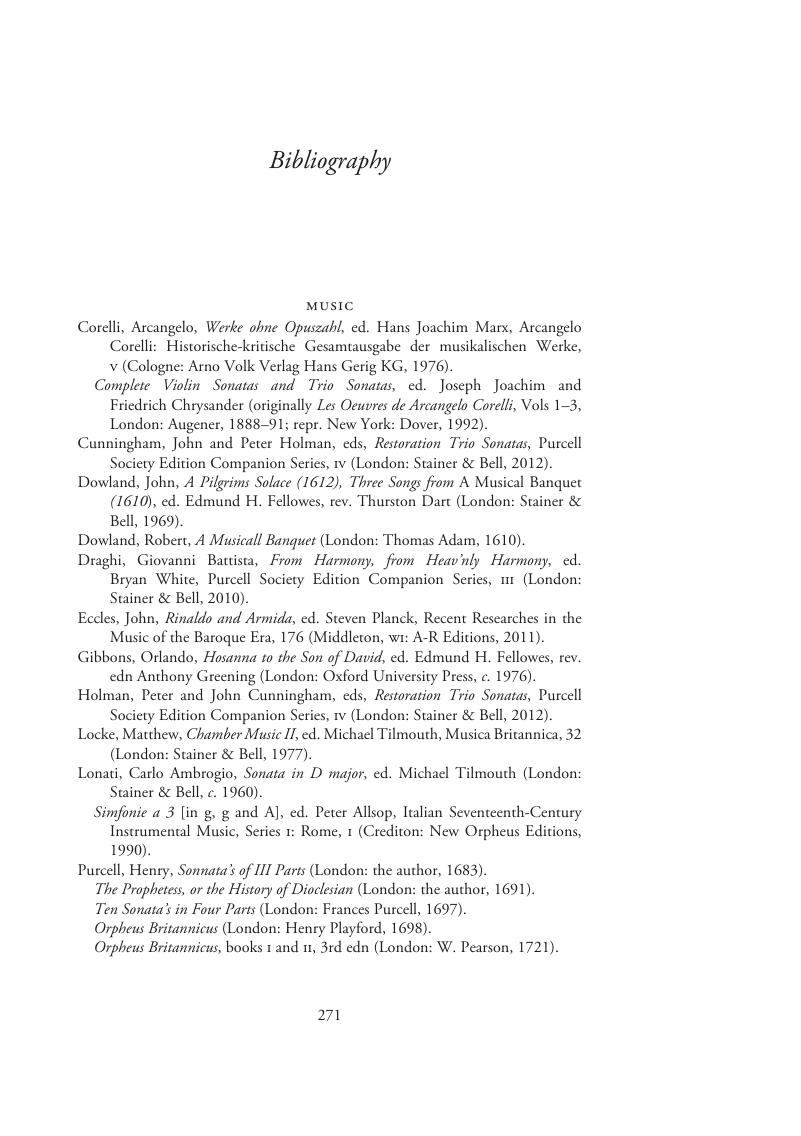Book contents
- Compositional Artifice in the Music of Henry Purcell
- Musical Performance and Reception
- Compositional Artifice in the Music of Henry Purcell
- Copyright page
- Contents
- Figures
- Tables
- Music Examples
- Acknowledgements
- Note on Music Examples
- Abbreviations
- Glossary of Analytical Terms
- Introduction
- Part I Purcell’s ‘Art of Descant’
- Part II ‘Thou dost thy former skill improve’
- Bibliography
- Index of Compositions
- General Index
- References
Bibliography
Published online by Cambridge University Press: 30 September 2019
- Compositional Artifice in the Music of Henry Purcell
- Musical Performance and Reception
- Compositional Artifice in the Music of Henry Purcell
- Copyright page
- Contents
- Figures
- Tables
- Music Examples
- Acknowledgements
- Note on Music Examples
- Abbreviations
- Glossary of Analytical Terms
- Introduction
- Part I Purcell’s ‘Art of Descant’
- Part II ‘Thou dost thy former skill improve’
- Bibliography
- Index of Compositions
- General Index
- References
Summary

- Type
- Chapter
- Information
- Compositional Artifice in the Music of Henry Purcell , pp. 271 - 283Publisher: Cambridge University PressPrint publication year: 2019

